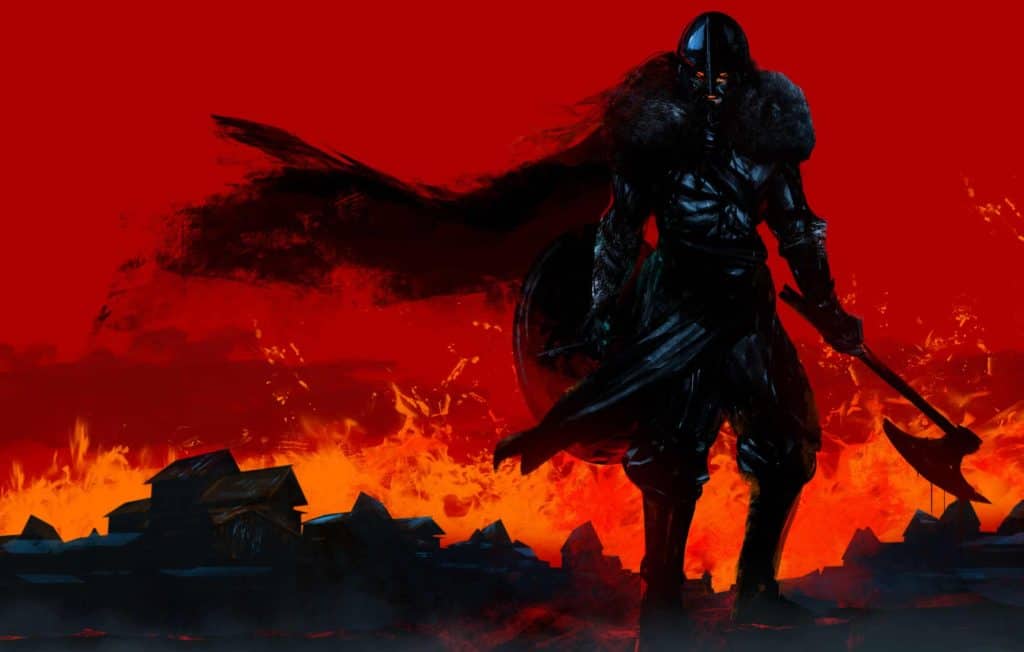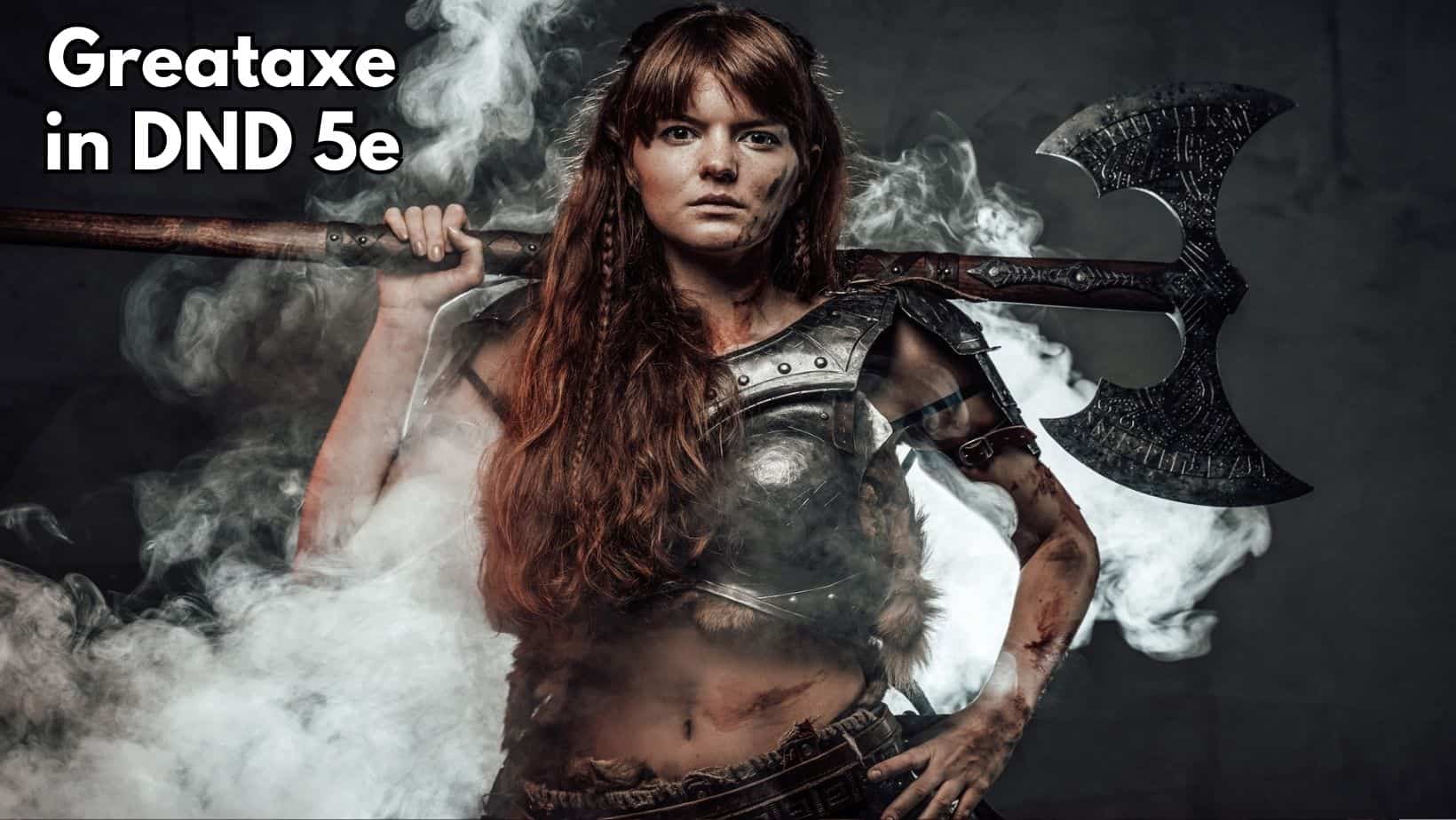In the world of tabletop role-playing games, Dungeons and Dragons stands as the ever prominent titan of the genre since its inception back in 1974. Within this intricate game of palace intrigues, epic quests, formidable monsters, and heroic battles, the choice of your hero’s weapon can dramatically influence your gameplay and success rates. It is within such a context that many players find themselves in a constant debate over two classic weapons: the formidable Greataxe, and the fearsome Greatsword. Both of these iconic martial instruments are traditional favorites of hearty, front-line brawlers who prefer their battles up close and personal. This blog post aims to shed some light on this age-old debate and help players make an informed decision on the choice of arms they bestow upon their characters.
Both the Greataxe and the Greatsword inspire images of powerful characters, hulking brutes, nimble elves, or whoever you prefer to channel in your D&D campaigns, clashing with horrifying creatures and battling against the odds. These are not subtle weapons – they are designed to deal hefty damage, offer considerable range, and generally solidify their user’s presence on the battlefield. But the perennial question remains, which of these monstrous weapons should a player choose to maximize their character’s potential in the game? Which weapon truly reigns supreme in the many realms and dimensions of Dungeons & Dragons 5th edition?
In order to answer this question, one must delve deep into the mechanics of D&D and highlight the different scenarios, attributes, skills, racial features, and damage potential of both weapons. When is it more advantageous to swing a Greataxe over a Greatsword, and what character builds or races synergize better with each? Does one completely overshadow the other in sheer damage potential or does the choice ultimately boil down to personal preference and aesthetics?
This post is divided into several sections, each expounding on the different aspects of the Greatsword and the Greataxe: from their basic properties, damage distribution dynamics, and how they interact with different fighting styles and synergies to the broader debate amongst the D&D community over the choice between these two titanic weapons. Our aim is to provide you, the player, with a thorough understanding of the strengths, weaknesses, and tactical implications associated with both the Greataxe and Greatsword, enabling you to make an informed decision for your heroic (or villainous) endeavors.
The Basics of Greataxe and Greatsword
Before we delve into the nitty-gritty complexities of the Greataxe vs. Greatsword debate, let’s first establish a baseline understanding of each weapon. It’s paramount you understand their basic attributes, damage potential, and unique properties that can influence their utility in different game scenarios. We will also touch on the aesthetics and flavor these weapons bring to your character because, after all, the immersive role-playing aspect of D&D is as important as its tactical components.
In D&D, weapons aren’t merely devices for dealing damage – they carry a certain personality, playing a vital role in shaping the narrative of your character’s journey. As such, a thorough understanding of these martial tools is crucial – not just from a mechanical standpoint, but also from an aesthetic and role-playing perspective.
Try my AI Tabletop RPG generators...and an extensive library of content!
Greataxe Overview
The Greataxe, known for its high damage potential, is a martial melee weapon that requires two hands to wield effectively due to its heavy property. The heft of a Greataxe gives it a base damage of 1d12 slashing – the highest potential damage of any basic, non-magical melee weapon in the game.
Plumbing into the aesthetics, the Greataxe often conjures up images of towering barbarians, orc war chiefs, or axe-wielding dwarven warriors wading into battle. It’s a symbol of brute strength and raw power, a weapon for those who favor hearty, front-row confrontation with their enemies. It embodies characters who are as possibly stubborn and sturdy as the weapon they wield, and often, it’s favored by those who laugh in the face of subtle tactics and cunning strategies.
Greatsword Overview
The Greatsword, like the Greataxe, also classifies as a two-handed martial melee weapon, but it carries different attributes. It deals 2d6 slashing damage, offering a higher minimum and average damage output than the Greataxe, albeit with a slightly lower top-end potential.
When it comes to aesthetics and flavor, wielding a Greatsword paints a picture of skilled, disciplined warriors who harmonize brute strength with finesse. Heroic knights, high-elf champions, and experienced gladiator veterans are all commonly associated with this majestic weapon. The Greatsword is symbolic of an elegant dance of destruction on the battlefield, commanding respect and awe with each calculated swing. It is a fitting choice for characters who value balance in their approach, carrying the might of an axe and the precision of a sword.
⚔️ Fantasy RPG Random Tables Books
Make life as a Gamemaster easier…
If you play Dungeons & Dragons, Pathfinder, or other fantasy RPGs, this
RPG random tables series
is packed with encounters, NPCs, treasure, and more. Available in eBook or print—either way, you’ll have a wealth of adventure ideas at your fingertips.
Damage Comparison and Mechanics
Evaluating any weapon in D&D goes far beyond just looking at its dice values. Making the most effective use of a weapon requires an understanding of probability, interactions with various class skills, and the dynamics of damage distribution. In this section, we will critically analyze the damage potential of the Greataxe and the Greatsword and discuss the key mechanics that distinguish these weapons from each other.
Average Damage and Distribution
On the surface, it would seem that the Greataxe, with its high dice value of 1d12, would always outperform the Greatsword. However, the 2d6 of the Greatsword lends a significant edge in terms of consistent damage output. The probability of rolling a total of 7 (the median of 2d6) is far more likely than rolling a 6 or 7 on a single d12. This results in the Greatsword having a higher average and minimum damage output, reducing the risk of significantly underwhelming attacks.
Critical hits, infrequent as they may be, introduce yet another parameter to this equation. Both weapons double their dice on critical hits, but it’s worth noting that the Greataxe stands a better chance of hitting its higher damage potential during a critical hit due to the higher die value, but again, it’s at the price of consistency.
Great Weapon Fighting Style Interaction
The Great Weapon Fighting (GWF) style, available to fighters and paladins, allows for the rerolling of 1s and 2s on damage dice, though you must use the new roll even if it results in another 1 or 2. This style interacts differently with each weapon considering their unique damage dice. With the Greatsword wielding two d6 dice, it essentially benefits twice as much from the GWF style as the Greataxe does, thus increasing its average damage output even further.
Barbarian and Half-Orc Synergies
While the Greatsword generally outperforms the Greataxe in most cases, there are specific contexts where the Greataxe takes the lead. One such context is when considering racial and class synergies. For instance, a Half-Orc Barbarian holds considerable advantage while wielding a Greataxe. When such a character rolls a critical hit, their Savage Attacks trait lets them roll one of their weapon’s damage dice one more time. This ability coupled with the Barbarian’s Brutal Critical skill — which adds an extra damage die to critical hits at certain levels — significantly amplifies the Greataxe’s damage potential on critical hits.

Tactical Considerations
We’ve gone over the basic attributes, damage potential, and aesthetic implications of wielding either a Greataxe or a Greatsword. Now we’re delving into the tactical aspects of these weapons. Every player approaches the world of Dungeons and Dragons with their own unique strategy – some prefer charging into battle with a roar, while others take a measured approach to combat. Here we’ll be discussing when and in what situations each weapon shines, providing you valuable reference for times when you’ll have to choose between the Greataxe and Greatsword.
Thinking about how to optimally use your weapon in different battle scenarios is key to enhancing your character’s effectiveness on the battlefield. In D&D, not all combat situations are created equal, and understanding when to use what weapon can potentially steer the tide of battle in your favor.
Situational Advantages of Greataxe
Choosing a Greataxe over a Greatsword is particularly advantageous in scenarios where the potential for high damage in a single hit is crucial. This could include attacking enemies with high health but low armor class or aiming for a quick decimation of a particularly weak or unsuspecting enemy. The brutality of a Greataxe swing can sometimes be enough to fell an opponent in a single strike, providing that quick and decisive advantage in the heat of battle.
Moreover, for certain class-specific and racial abilities, the Greataxe is the favored weapon of choice. Take the Barbarian class, for example, which gains additional damage dice on critical hits, therefore effectively exploiting the 12-sided die of a Greataxe. Similarly, the Savage Attacks trait of the Half-Orc race also benefits from the higher damage die, offering a substantially elevated damage output on critical hits. These abilities make it especially advantageous for Barbarians or Half-Orcs to wield a Greataxe over a Greatsword.
Situational Advantages of Greatsword
On the other hand, the Greatsword excels in offering a steady stream of reliable damage. Its 2d6 damage implies a higher minimum and, on average, more consistent slashing damage output than its Greataxe counterpart, making it a dependable choice for sustained battles. The reliability of the damage output is a prized feature, especially when going up against opponents with high armor classes where every successful hit counts.
Furthermore, characters using the Great Weapon Fighting style can significantly benefit from wielding a Greatsword, as it allows re-rolling of 1s and 2s on damage dice. Given that the Greatsword has two damage dice, this fighting style greatly enhances the minimum damage potential of every swing. This is particularly useful when your character is a class that thrives on weapon efficiency and can continuously dish out reliable damage, such as a Fighter or a Paladin.
⚔️ Fantasy RPG Random Tables Books
Make life as a Gamemaster easier…
If you play Dungeons & Dragons, Pathfinder, or other fantasy RPGs, this
RPG random tables series
is packed with encounters, NPCs, treasure, and more. Available in eBook or print—either way, you’ll have a wealth of adventure ideas at your fingertips.
Remember, guys, your situational advantages strongly hinge on your character’s race, class, abilities, and combat strategy. It is important to consider these variables when choosing the perfect weapon for your adventures in the world of D&D.
The Debate: Greataxe vs. Greatsword
The comparison between the Greataxe and Greatsword is a topic of passionate discourse in the D&D community. Everyone, from casual players to seasoned Dungeon Masters, possesses a unique perspective forged from distinct experiences. Multiple factors, from player preferences to character mechanics, spur exciting debates. Let’s unravel the various knots of this dynamic conversation.
Community Opinions and Preferences
Community opinions tend to be as diverse as the races and classes inhabiting a D&D campaign. Some players advocate for the Greataxe’s higher damage ceiling and the thrill of rolling a d12, while fans of the Greatsword appreciate the weapon’s consistent damage output and broader tactical adaptability. Role-playing preferences also play a significant role, with players often choosing weapons that best complement their character’s backstory or personality.
Online polls and forum discussions suggest a slight preference towards the Greatsword, primarily due to its consistency in damage and synergy with the Great Weapon Fighting Style. However, there remains a strong contingent that vouches for the Greataxe, especially among those who play Barbarians or Half-Orcs, due to specific features that synergize well with the weapon.
Expert Analysis and Insights
Expert analysis often leans towards the statistical and probabilistic evaluations. In this realm, the Greatsword holds a slight edge over the Greataxe due to its increased damage consistency and its interaction with the Great Weapon Fighting Style. However, the Greataxe’s high damage potential, when combined with class features like the Barbarian’s Brutal Critical or the Half-Orc’s Savage Attacks, can often tip the balance in its favor in certain builds.
The experts remind us that D&D is not solely about optimizing character builds and maxing out damage outputs. Remembering the role-playing aspects of the game, they argue that the choice between a Greataxe and a Greatsword should also be influenced by factors like character backstory, campaign atmosphere, and overall combat aesthetic.
Game Balance and Design Considerations
From a game design standpoint, it’s important to consider how these weapons contribute to game balance. While the Greatsword offers consistent performance, which is more friendly for general purposes, the Greataxe’s potential for high damage feeds into unpredictable and exciting gameplay experiences.
The decision to make these weapons so different isn’t arbitrary. They deliberately cater to different tactical preferences and character builds, ensuring there isn’t a “one-size-fits-all” weapon for all situations and classes.
The dynamics between these two weapons exemplify the essence of D&D. The interplay of mechanics, role-playing, and personal preference encapsulates what makes this game so special for many players. Whether you fancy the raw power of the Greataxe or the balanced elegance of the Greatsword, the choice ultimately enriches the D&D experience, making every combat encounter a unique story to be told.
Try my AI Tabletop RPG generators...and an extensive library of content!
Customizing and Homebrew
Beyond the core rules and mechanics of Dungeons & Dragons 5e, there exists a realm of customization and creativity that can truly personalize your adventures. The transformative power of magic items and homebrew options allow players and Dungeon Masters (DMs) to modify and adjust the game to cater to unique storylines, character concepts, and preferences. Let’s explore how these elements can impact our Greataxe vs. Greatsword debate to further enrich the intricacies of weapon selection.
Enhancing with Magic Items
In the magical world of D&D, weapons are not limited to their basic capabilities. Magic items can significantly influence the effectiveness and appeal of both the Greataxe and the Greatsword. Magical enhancements typically add bonus damage or hit chances, or perhaps more complex features like elemental damage or unique spell-like effects.
Enhanced greataxes or greatswords like the “+1 Greataxe” or “+2 Greatsword”, add their respective bonuses to both attack and damage rolls. Such upgrades heighten the effectiveness of both weapons, but they don’t necessarily shift the balance between the two. However, some unique magic items favor one weapon over the other – for instance, the Dwarven Thrower (a magical Warhammer) caters to styles that might prefer the Greataxe, while Blackrazor (a notable magical Greatsword) affiliates with the Greatsword style. Bear in mind, the availability of these magic items is subject to your DM’s narrative and discretion.
Homebrew Rules and Adjustments
Working closely with homebrew rules unlocks an extensive playground for DMs and players. Tweaking weapon mechanics or creating new features can redefine the Greataxe and Greatsword relationship to better align with your campaign setting or to introduce a novel dynamic in your adventures.
For DMs who wish to amplify the critical hit concept, they might house-rule that Greataxe crits result in decapitation or a similar instant-kill outcome — a rule that potentially makes the Greataxe more attractive. On the other hand, if a DM’s campaign is led by expert swordsmen, they might introduce maneuvers or feats that promote the use of swords, effectively nudging players towards the Greatsword.
Homebrew rules can also incorporate weapon durability and maintenance, influencing how often a character might need to repair or replace their chosen weapon. Depending on how these rules are structured, one weapon might prove more reliable and subsequently more appealing than the other.
At the end of teh day, customization with great magic items and smart homebrew rules can add layers of depth to weapon selection, intertwining it with the narrative and unique structure of your D&D adventures. Such variables can make your Greataxe vs. Greatsword decision even more personal and significant in the context of your character’s journey.

Conclusion: Greataxe vs Greatsword DND 5e
The contest between the Greataxe and Greatsword is a complex one, with each weapon offering unique strengths and opportunities for gameplay. The Greataxe speaks to those who crave the thrill of a critical hit, dealing severe damage with a single swing. Its charm lies in its high-risk, high-reward nature, making each roll of the die a gripping moment. Furthermore, specific character builds such as Barbarians or Half-Orcs can tap into the Greataxe’s potential to the fullest, transforming it into a veritable instrument of devastation.
The Greatsword, on the other hand, brings to the table consistency with its higher minimum and average damage. It plays well with the Great Weapon Fighting style and suits characters valuing steadiness and calculated strength. It is truly the weapon embodying the warrior’s dance, skillfully balanced between strength and finesse.
Choosing between the Greataxe and Greatsword isn’t simply a matter of statistics. It’s a reflection of your character’s personality, their style of combat, the narrative you wish to narrate in your campaign. The barbarian, reckless and relentless, might resonate better with the wild swings of a Greataxe, while the disciplined fighter or knight may prefer the dependable destruction of a Greatsword.
However, the most important factor in choosing a weapon in Dungeons and Dragons comes down to simply this: what would be the most fun for you. While this article covers general advice and statistical trends, D&D is a game of adventure, creativity, and most importantly, enjoyment. Whether you relish the thrill of landing a punishing blow with a Greataxe or prefer the tactical reliability of steadily wearing foes down with a Greatsword, your choice should reflect the essence of your character’s soul, and what you, as a player, find most satisfying. Happy gaming, and may your blades always strike true!










